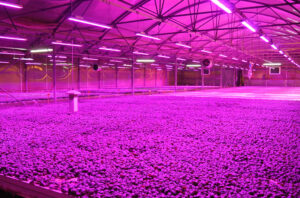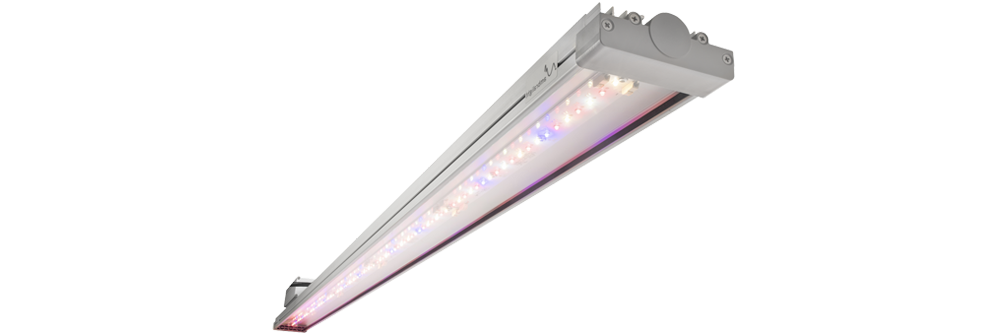S.A.BA.R., located in Reggio Emilia, is an innovative company specializing in indoors greenhouse farming of high-quality basil. Seeking to enhance crop yield and reduce operating costs, the company transitioned from HPS lamps to our energy-efficient LED grow lights. This case study highlights how the switch to greenhouse lighting powered by OSRAM LEDs significantly improved overall performance. With a focus on LED efficiency, our solution supported sustainable plants growth while cutting costs and energy use. Learn how S.A.BA.R. successfully upgraded its basil cultivation process and benefited from modern, efficient lighting technology that meets the specific needs of an indoors greenhouse dedicated to fresh herb production.
The project
Previously, S.A.BA.R. used high-pressure sodium (HPS) lamps in their 750 m² indoors greenhouse to support basil growth and protect crops from disease. However, the system had major drawbacks: high operational costs and a peak energy demand of 32 kW. The goal was to significantly reduce energy consumption while maintaining or improving productivity. As stated in their technical assessment, the challenge was to cut consumption and increase efficiency without compromising results. Our LED lighting solution addressed all these needs by replacing HPS with more sustainable growing lights, tailored to the crop’s biology. This transition reflects the growing need to compare LED grow light vs HPS performance in real-world greenhouse farming applications.
Installation description
Our team replaced the HPS lamps with our LED fixtures powered by OSRAM LEDs, designed to emit within the photosynthetically active spectrum. These LED grow lights support uniform plants growth and efficient illumination for each development phase. After installation, S.A.BA.R. reduced peak energy consumption by 56% — from 32 kW to 14 kW — while maintaining excellent basil quality. The improved system also optimized light cycles, providing consistent LED light spectrum exposure aligned with growth stages. This upgrade significantly improved both productivity and LED efficiency, confirming the clear advantages of custom LED lighting in controlled greenhouse lighting environments. It also allowed more precise control over plant health and crop management.
Installed product
Benefits achieved
Thanks to our LED solutions, S.A.BA.R. achieved outstanding results:
- Energy efficiency: a 56% reduction in energy consumption, resulting in annual savings of €75,000 and a CO2 emissions reduction of 30 tons per year.
- Improved productivity: the basil growth cycle decreased from 35 to 30 days, leading to a 20% increase in production.
- Environmental sustainability: LED lighting ensures a cleaner, more eco-friendly process compared to traditional HPS lamps.
- Superior quality: calibrated lighting promotes uniform growth, enhancing the appearance and health of the plants.
This project confirms the clear advantages of LED grow light vs HPS, especially in commercial greenhouse farming. Thanks to precise LED light spectrum control and better efficiency, S.A.BA.R. continues to produce premium basil with lower costs and reduced environmental impact—setting a model for the future of greenhouse lights in agriculture.


